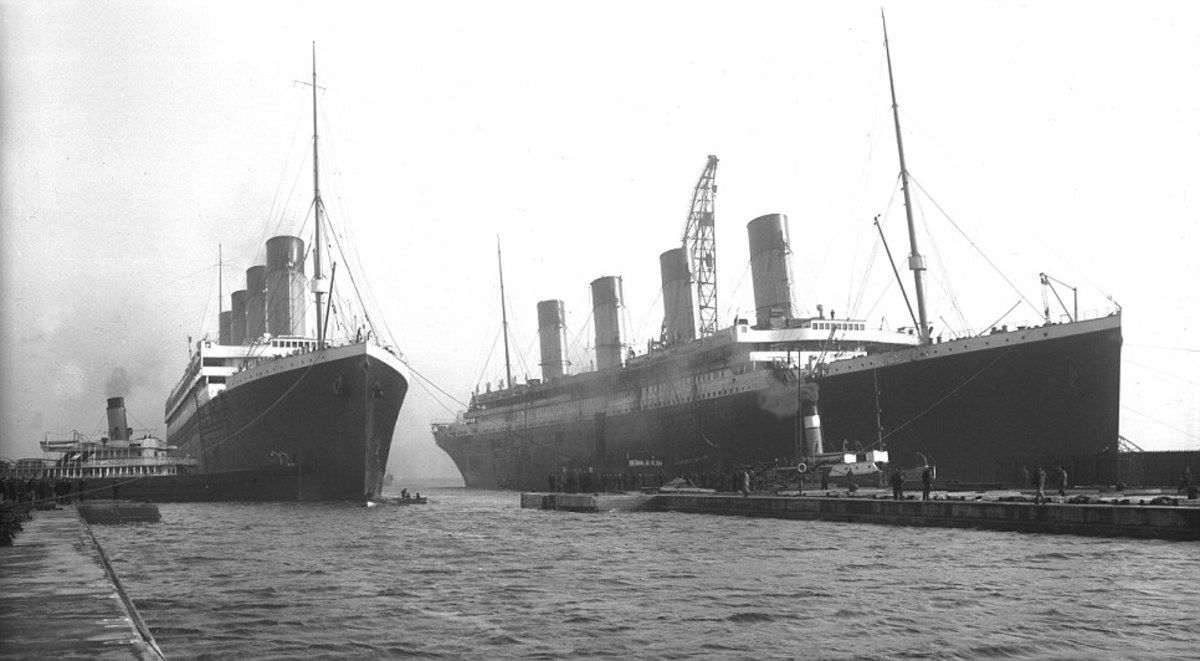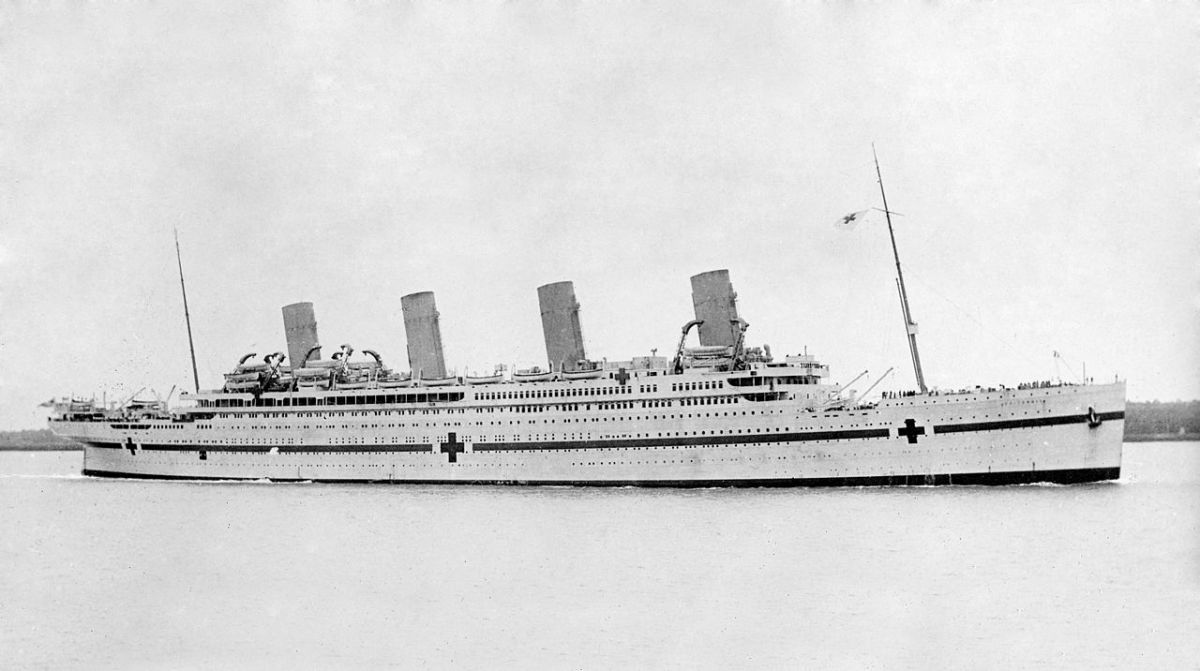RMS Titanic & Olympic Collisions and Sinking Conspiracy - A Massive Insurance Scam?
Nearly 100 years on, the Titanic sinking still attracts attention
While the dramatic sinking of the RMS Titanic on the night of April 14, 1912 still holds a massive fascination nearly 100 years later, there are many unanswered questions surrounding the tragic lost of the ship This has lead to several conspiracy theories about circumstances leading to the sinking of the Titanic.
What did sink the Titanic?
These range from pack ice instead of an actual iceberg, problems with the watertight doors, and a massive explosion following a coal fire in one of the ship’s coal bunkers. Yet, the biggest Titanic conspiracy theory is centred around an insurance scam involving the Titanic’s sister ship RMS Olympic.
Titanic : The Facts
While the true facts of what happen to Titanic on that faithful night will never surface, and even the numerous recent deep sea dives on the wreck cannot conclusively pinpoint the exact reason this famous liner sank. The facts are there, the Titanic was steaming at full speed through the Northwest passage to save time to get to New York early, but this dangerous route is notoriously famous for large icebergs drifting down from Greenland. Although, it was a clear night with good visibility, the vessel still managed to strike an iceberg, and the rest is history.
Titanic and her sister ship Olympic :
The Titanic conspiracy theory, centred around an insurance scam involving the sister ship Olympic, only really came to the fore in the 1980s with the publication of a controversial book by author Robin Gardiner entitled ‘Titanic: The Ship That Never Sank?’. The conspiracy theory presented in this book is centred around a massive insurance scam involving the owners of the Titanic and her sister ship Olympic, the White Star Line.
The Olympic Collision :
The Titanic and her sister ship Olympic were both built alongside each other at Harland & Wolff in Belfast. Olympic was the older sister and was completed first and launched in October 1910. Titanic was launched the following year in May 1911. Olympic commenced her maiden voyage on June 14 1911, but a few months later on September 20, 1911, the Olympic was involved in a major collision with the Royal Navy cruiser HMS Hawke near Southampton.
The heavily armoured Royal Navy cruiser smashed its ram into the side of the Olympic, seriously damaging both ships. However, the subsequent naval inquiry found the Royal Navy vessel free of all blame.
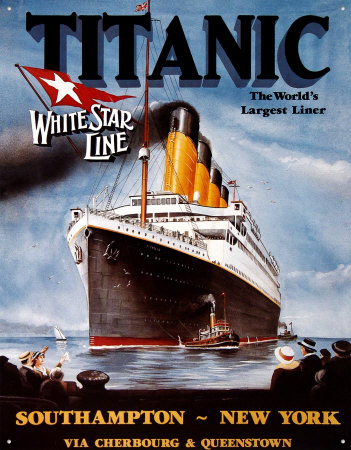
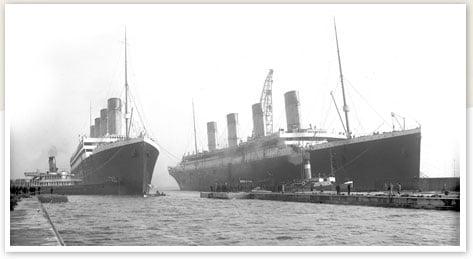
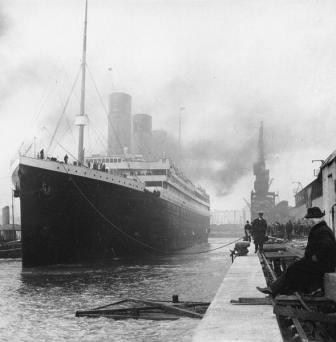
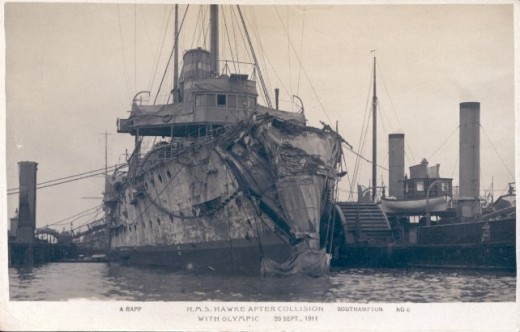
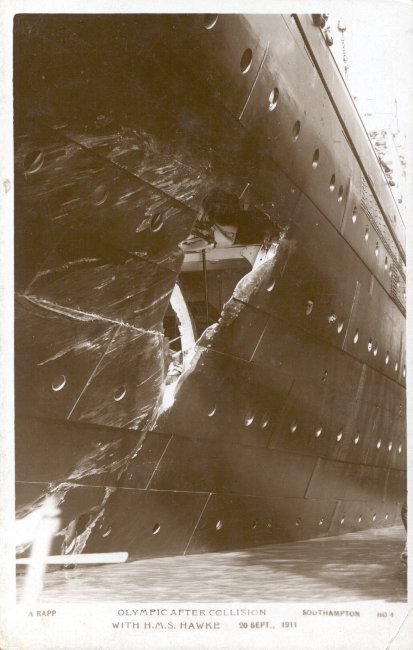
Olympic out of action for repairs :
According to Gardiner's theory, the owners, the White Star Line was allegedly not insured for the cost of fixing the damaged Olympic. This is where the insurance conspiracy theory starts. Olympic was badly damaged and had to limp back to Harland & Wolff in Belfast to be repaired. White Star Line’s new flagship would be out of action for repairs, and the Titanic's completion date put back as a consequence. This would result in a serious financial loss for the company.
The Titanic / Olympic Switch?
In Gardiner's theory, he suggests the plan was to dispose of the crippled Olympic to collect insurance money by swopping the identity of the two vessels, which he reckons could easily done as both vessels were identical save a few minor differences and changing the names on all the lifeboats, lifebelts, ship’s bell etc.
With identities switch, the damaged Olympic now masquerading as Titanic would have an ‘accident’ at sea on her maiden voyage and that the seacocks were to be opened at sea to slowly flood the ship. The passengers would have had time to be rescued by shipping in the area, and the White Star Line would collect the insurance.
Which vessel struck the iceberg?
However, whether it was the actual RMS Titanic or the RMS Olympic masquerading as Titanic which struck the iceberg and sank on April 14 1912 with a tragic loss oflife we will never know. According to Gardiner's insurance scam theory, things didn’t go quite to plan. Did the Titanic spent 25 years in service as the Olympic?
Flaws in the ‘switch’ theory :
The Gardiner's Titanic conspiracy theory, centred around an insurance scam, is a great conspiracy, but seems to be flawed in numerous areas. The main flaw is the ‘switch’ of the two ship at Harland & Wolff in Belfast. The Olympic and Titanic were huge ships, and to swop identities would not be a easy task, which would involve many workers, all of which would have to be paid to keep silent, and at least one of these workers would of gone to the papers after the event. Another flaw to this conspiracy theory is why would the White Star Line deliberately sink a vessel that was considerably under-insured.
The evidence lies at the bottom of the sea :
We will never know the true facts surrounding the sinking of RMS Titanic, and those who knew, and the evidence lies over two and half miles down at the bottom of the sea. Titanic conspiracy theories will continue to fascinate the public for at least another 100 years.
© David Lloyd-Jones 2011

